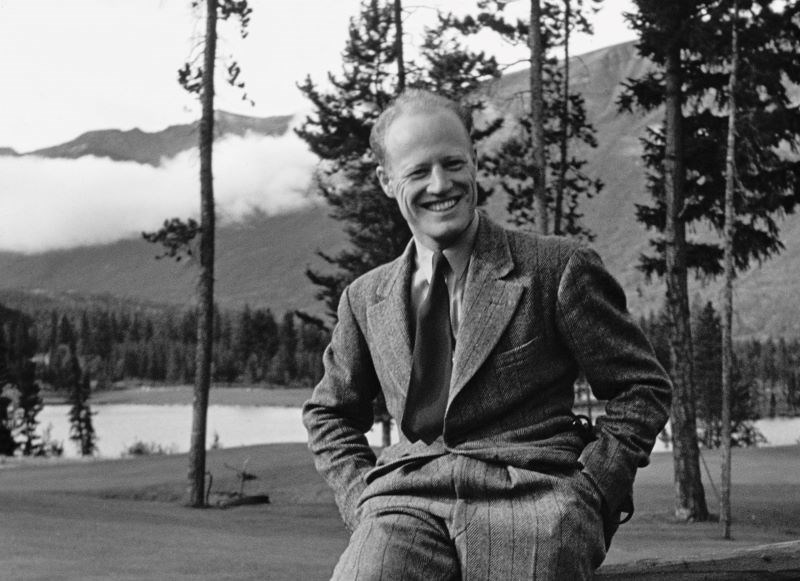Scott Hayes, Local Journalism Initiative Reporter | [email protected]
There are perhaps too many stories about the late Harry Rowed to share, but you canÔÇÖt blame his son for continuing to share them.
When Scott Rowed made his most recent presentation on Oct. 1 at an event hosted by the Jasper-Yellowhead Historical Society, he naturally tried to focus his anecdotes on his fatherÔÇÖs life and work in Jasper.
ÔÇťI tried to present a good cross-section of dad's work as well as focusing in on the Jasper area,ÔÇŁ he said.
Considering the alternative and the constraints of time, that was a smart move.
After all, Harry Rowed traveled extensively as an astute photojournalist: Berlin in 1936 for the Olympics, and Europe in the years afterward before returning to Canada to become the director of photo services for the National Film Board, which would send him on many other roads in his homeland.
Some of those roads led to the mountains. His assignments took him to the Rockies where he covered Lovat Scout and Canadian mountain troop training. There must have been something in the air, because he moved his family to Jasper after World War II.
His career included other commercial and editorial work that took him to Mexico, through the South Pacific, New Zealand and back to Europe.
A large part of any photographerÔÇÖs success goes beyond simply having the right equipment and knowing how to use it. Scott said Harry Rowed was an example for being friendly and personable to a wide variety of people who would become subjects of his work. They included everyone from Mackenzie King, Winston Churchill and Franklin Roosevelt at the Quebec Conference in 1943 to fishermen, coal miners and rice harvesters.
For some, he was the only person to take their photograph.
ÔÇťThatÔÇÖs ÔÇô I think ÔÇô so much of the key to how he was successful and was able to get access to meet with various people and photograph them,ÔÇŁ Scott said.
ÔÇťFor example, there's a Hutterite community that's just near Lethbridge. They, of course, did not like people photographing them; it was kind of against their religion. But he was able to go there and get to know them. He must have spent some time to the point where they actually felt, ÔÇśOkay, he's a good guy, he's going to present us well and we'll let him photograph.ÔÇÖ In 1947, for those pictures, that was really unusual enough for that time to have a photographer go in there.ÔÇŁ
ÔÇťHe treated everybody with respect,ÔÇŁ Scott added. ÔÇťHe didn't look down on anybody.ÔÇŁ
As much as he loved people and the world, he still made Jasper his long-time home. As an avid mountaineer, he ski toured and climbed the Rockies, and was an active member of the Alpine Club of Canada going back to 1939.
To be able to bring his dadÔÇÖs work and legacy to old and new audiences alike was very gratifying for Scott Rowed, who is trying to preserve and digitize the collection of negatives and transparencies as a testament to his fatherÔÇÖs legacy. Interest is improving, he said, which is a big boon. He remembers the state of the collection when his father retired in the 1970s.
ÔÇťHis work was just in boxes at that point. He kind of faded from the national memory, I guess. Finally, I began to get into it. There's certainly been a big revival and interest in what he's doing. I'm doing slideshows all over.ÔÇŁ
He has developed a marvelous website at as a tribute. A book is also in the works.




